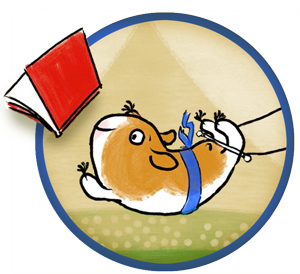Or, How Teens Showed Me to Embrace the Open-Endedness of the Writing Life
By Angela Burke Kunkel
Pixabay
As I write this, we’re smack in the middle of #NaNoWriMo, something I’m participating in daily with a group of high school students. NaNoWriMo, or National Novel Writing Month, takes place every November, and participants try to write the first draft of a novel, roughly 50,000 words. When you sign up for NaNoWriMo’s Young Writers Program, they send you lots of neat swag, including a deck of prompt cards to get those creative juices flowing. The interesting thing, though, is that the teens have emphatically waved those cards off. More than a writing prompt, this group is looking for community, encouragement, support — something all writers crave, regardless of age or grade level.
The group’s rejection of prompt cards got me thinking about ways to teach craft without putting too many restrictions on students. This is likely more of an issue for self-conscious adolescents than younger children, but it’s worth thinking about students gradually picking up the belief that they’re not writers. Writing and creativity are habits that can be learned and expanded with practice. And I don’t want these teens — or my own children, or any child — to lose it.
So, regardless of what creative path you may choose, or, if you’re a teacher, what curriculum you might be bound to this year, here are five things I think I important to make space for in the classroom:
1) Provide Non-Evaluative Writing Time
The teens I write with are busy, over-scheduled, stressed, and yet they show up daily to write — not because it’s required or graded, but because it’s NOT. #NaNoWriMo is fun because it’s a challenge for themselves, not for an authority figure.
Because teachers have so much pressure to teach a variety of forms, as well as the writing process, there’s a danger of treating non-evaluative writing as “extra.” I’d make the case that non-evaluative time is what keeps kids motivated to write.
All writers need to write to explore. I have pages upon pages of scribbles in notebooks that will never become final drafts. But I had to write those pages in order to arrive at the idea that did work. Our young writers need the same! Whether it’s daily journaling or simply opting not to grade a certain piece, let’s make sure students aren’t in a constant cycle of evaluation.
2) Provide Models
Students benefit from models in terms of structure, word choice, imagery, word play, even genre . . . the more teachers and their students read widely, the more students are able to put those conventions to use in their own writing. Many teens in our NaNoWriMo group read fantasy, and that’s what they’re writing this month. Imitation is a step towards mastery.
Another most important model is YOU! Let them see their teacher write. If you’re not a confident writer (although, if you’re reading this blog, you’re likely at least interested), try a challenge like Kate Messner’s Teachers Write!. Give yourself the same non-evaluative time, too. Write alongside them. It’s encouraging for children to see adults struggle with ideas, attempt something, and return to the page again.
3) Provide Community
For adults and kids alike, writing can feel like a lonely endeavor. From pairs to small groups to whole class or whole school, celebrate writing by giving students the time to talk and share their work, formally and informally, with each other and with the adults in their lives.
4) Provide the Opportunity to Share (Or Not)
At the same time, allowing students to opt out of sharing work is part of a safe and encouraging writing community. Not all pieces will be final drafts or published work, and not all pieces need to be shared. Also, who says a whole piece has to be shared? Maybe it’s a great sentence. Maybe it’s a way the writer came up with an idea. Maybe it’s a favorite word they used.
5) Provide PLAY
I know this seems to contradict the idea of providing models, but a healthy balance of both is important! I’ve had the most success with prompts that feel playful rather than assigned. Twitter and Instagram have an endless number of accounts with photos that can serve as interesting prompts. Found poetry inspires children to play with language. Book spine poetry encourages them to explore the library. And, I’ll close with a favorite prompt from the group of teens I meet with: We each chose a book at random from the library, selected a sentence from a given page number, and wrote for ten minutes, using that sentence as the beginning of our own writing. As one teen put it, “We had a start, so we knew were we were going, but we were all going in different directions, and that’s what made it interesting.”
Let’s keep it interesting, for ourselves and for our students.
Angela Burke Kunkel is a school librarian, picture-book author, and somewhat conflicted #NaNoWriMo participant. When she’s not reading or writing, you can probably find her walking her dogs or scouring secondhand stores. Look for her debut picture book with illustrator Paola Escobar, DIGGING FOR WORDS: JOSÉ ALBERTO GUTIÉRREZ AND THE LIBRARY HE BUILT (Random House/Schwartz & Wade) in September 2020.
Follow author Angela Burke Kunkel:
Website: angelakunkel.com
Twitter: @angkunkel
Instagram: @angkunkel



